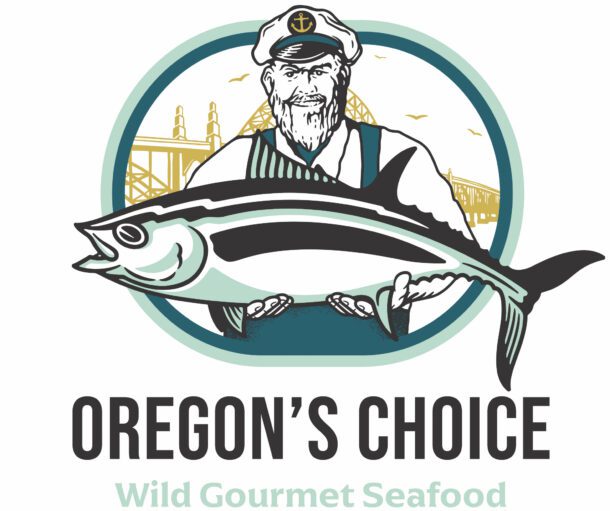Current Issues & Sustainable Fishing
Herb Goblirsch comments on Farmed vs. Wild Salmon
Why would anyone want to eat a fish pumped full of antibiotics, vaccines and artificial coloring in its foods and now add PCB?
PCB test pits farmed salmon vs. wild salmon
A health group recommends limiting meals of farm-raised salmon after finding slightly higher levels of the chemical.
MICHAEL MILSTEIN, The Oregonian
Tests of farm-raised salmon bought in three U.S. cities including Portland show they contain more PCBs than wild fish and other common foods, according to a report released today by a public health advocacy group.
Cut-rate farmed salmon has muscled Northwest wild salmon out of many restaurants and stores and now makes up 80 percent of fresh salmon sold around the country.
Opinions differ about whether the risk of cancer-causing PCBs outweighs health benefits of eating seafood. The 10 samples of farmed salmon tested by the Washington, D.C.-based Environmental Working Group would be safe under U.S. Food and Drug Administration standards governing fish sold in supermarkets.
The group applied newer limits set by the U.S. Environmental Protection Agency and concluded that consumers should not eat farmed salmon from some regions more than once a month. The group argues the EPA rules from 1998 are more thorough than FDA standards dating to the mid-1980s.
"If you look at true risk, millions of people exceed the acceptable level," said Jane Houlihan, vice president of research for the group.
An EPA spokesman said, however, that the agency's tighter standards were designed for sport and subsistence fishermen who may eat contaminated fish as a steady diet.
Salmon farming advocates said the Environmental Working Group used the stricter EPA standard to confuse consumers who know the health benefits of salmon and other fish rich in Omega-3 fatty acids.
"If the public listened to this, our health would be negatively affected," said Charles Santerre, a professor of food and nutrition at Purdue University. "Any small additional risk of cancer is far outweighed by the benefits of fatty acids in the fish."
The FDA has begun its own detailed testing of farmed salmon and may update its standards if the results warrant, spokeswoman Kimberly Rawlings said Tuesday.
Release of the report reflects further escalation of debate over salmon farming, which has captured the world salmon supply by turning out cheap, fresh fish throughout the year. Ecotrust, a Portland conservation group, said the report could boost demand for wild salmon from the Northwest.
The United States last year imported more than 200,000 tons of salmon raised in floating pens off the coasts of British Columbia, Chile and elsewhere.
Farmed salmon eat pellets made of ground-up prey fish, such as anchovies.
PCBs have been outlawed in many countries but persist many years in the environment and collect in the fat of salmon's prey fish. Once factories convert those fish into feed, farmed fish consume them in more concentrated form.
The Environmental Working Group tested Canadian-grown salmon from two Fred Meyer stores and a Safeway in Portland. It also tested salmon from other countries bought at stores in San Francisco and Washington, D.C.
The results were not peer reviewed. But they mirror peer-reviewed studies from Europe and Canada.
Farmed salmon on average contained PCB concentrations of 27 parts per billion, while wild salmon averaged about 5 parts per billion, the Environmental Working Group report said. Both fall well within FDA limits of 2,000 parts per billion. But the EPA recommends against eating fish more than twice a week if it contains PCB levels greater than 6 parts per billion.
Comparisons from abroad showed salmon from Scotland held the heaviest load of PCBs, with high enough levels that the EPA limits would suggest eating it no more than once every two months, the report said.
Fish from Canada, Iceland and Maine held enough PCBs that the EPA standards would suggest eating them only once a month. Salmon raised in Chile did not warrant such limits.
The regional variation in PCB levels probably stems from the source of the prey fish used to feed farmed salmon. Farms in Scotland probably use feed made of fish from European waters, which are more polluted than those off Chile.
The long-term risk posed by PCBs in human diets is poorly known, experts say. Most government limits are based on extreme cases in which people were exposed to massive doses due to industrial pollution or accidents.
The benefits of eating fish rich in fatty acids are more clearly proven than the risk of PCB exposure, said Robert Lawrence, a professor at Johns Hopkins University's Bloomberg School of Public Health. Omega-3 fatty acids protect against heart disease, reduce hypertension and ease joint pain and arthritis.
Lawrence led a National Academy of Sciences panel on the health implications of PCBs and similar compounds that issued a report in June. The panel decided against changing the current federal recommendation to consume two servings of fish a week.
But it did encourage salmon farmers to pursue feeds with less chemical contamination. Industry spokesman said they are.

